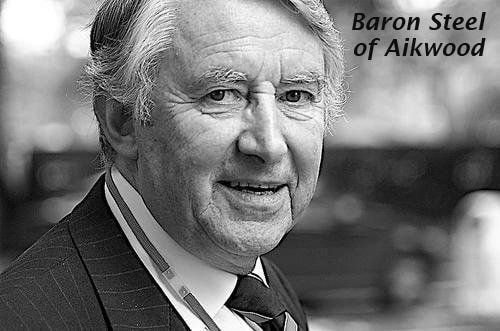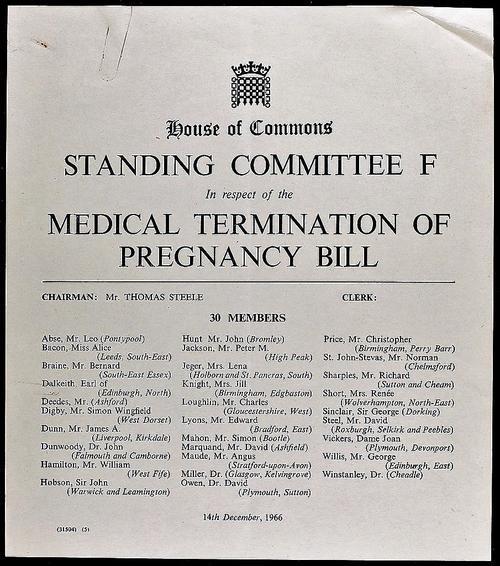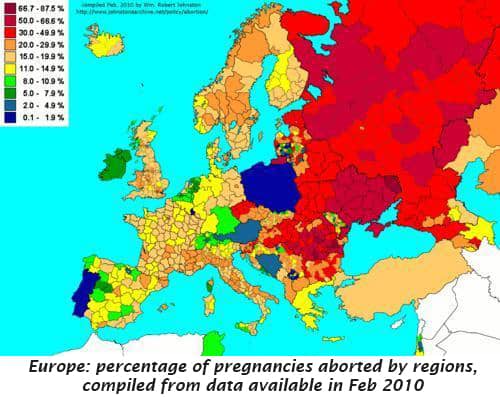
Anniversaries are how we mark out our history. Some are welcome, others are not; some are humdrum, others are special.
This year, two are extra special: a 500th and a 50th. Both changed our world. The first ushered in the wonderful gospel freedoms of the Protestant Reformation. The second is the passing of the 1967 Abortion Act, which ushered in the hideous practice of legally killing unborn children in England, Scotland and Wales. The story of the Augustinian friar has been retold many times; the slaughter of the defenceless pre-born is a more veiled story.
The history of UK abortion law is long but simple. For many centuries, abortion had, by and large, been a criminal offence. And even today, abortion remains, perhaps surprisingly, illegal in the UK.
This is primarily because sections 58 and 59 of the 1861 Offences Against the Person Act still make it a crime for anyone, using any means whatsoever, ‘to procure the miscarriage of any woman’.
The 1929 Infant Life (Preservation) Act further extended this prohibition to a child ‘capable of being born alive’. In other words, for 100 years and more there was an explicit and widespread public condemnation of abortion, severe penalties for those illicitly involved, as well as genuine protection for the unborn and their mothers.
How did we get the 1967 Act?
So what happened in 1967? How did we acquire just about the most liberal and ruthless abortion law in Europe, even in the world?
Pre-1967 statutes allowed abortion only for the preservation of the mother’s life and health. But, for some, this was never enough. If the door to abortion was slightly ajar, they wanted it ripped off its hinges. Yet no British government was willing to grasp the nettle. Several MPs had introduced abortion-liberalising bills, but they had all foundered.

Then, in May 1966, David Steel MP (now Baron Steel of Aikwood) drew third place in the ballot for private members’ bills and he introduced his Medical Termination of Pregnancy Bill into the House of Commons.
Its first reading was on 15 June and a protracted and arduous debate began. Days and nights were spent arguing, rewording, lobbying and generally manipulating events in both Houses. It was all quite legitimate; the bill’s supporters simply seized their opportunity.
Eventually, with parliamentary time being given by the Labour government of the day to ensure its success, the bill passed its third reading on Friday 14 July 1967, after an all-night sitting in a half-empty House of Commons, by a majority of 167 to 83.
It received the Royal Assent on Friday 27 October. Six months later, on 27 April 1968, the Act came into operation and the legalised killing started.
One year later, its sponsor, David Steel, speaking at a meeting of supporters, said that the bill was successful because, ‘The right men were in the right place at the right time’. By contrast, is the dismal fact that the number of evangelical Christian leaders who ‘saw the issue’ and stood up and spoke out against the bill can be counted on the fingers of one hand. Effective opposition was too little, too late.
What is the content of the 1967 Act?
The Act was not only a compromise, but also a poorly drafted piece of legislation. This may have suited the purposes of the pro-abortionists, because over the years most of its intended legal boundaries have been ridden over roughshod.
During the next two decades, no fewer than 15 attempts were made in Parliament to revise the Act, either by tightening the criteria for abortion or lowering the upper time limit. All failed.
In outline, the 1967 Abortion Act did not legalise any abortion. It gave no right to a woman to an abortion and it did not provide ‘abortion-on-demand’. Also, it imposed no duty on any doctor to carry out an abortion. Nevertheless, it did offer a legal defence against the charge of attempting ‘to procure the miscarriage of any woman’ under the 1861 Offences Against the Person Act.
Thus it did, according to section 1, protect from prosecution a ‘registered medical practitioner’ who performed an abortion, as long as two such doctors certified that, in their opinion, formed in good faith, the continuance of the pregnancy would involve risk, on one or more of six statutory grounds, greater than if the pregnancy were terminated.
After 50 years, 97 per cent of all UK abortions are now performed on ‘ground C’, the so-called ‘social clause’. It specifies the ‘risk of injury to the physical or mental health of the pregnant woman’. In effect, this criterion is as long as it is wide.
What is the effect of the 1967 Act?
In simple terms, the answer is that an estimated 8.8 million unborn children have been aborted in the UK during the last 50 years.
Such a colossal number is almost beyond comprehension. The annual figures remain enormous. During 2016, there were 190,604 abortions performed in England and Wales, plus another 12,063 in Scotland.
This total of 202,469 is approximately the entire population of Bournemouth or Swansea or Aberdeen. It is equivalent to 770 unborn children every Monday, Tuesday, Wednesday, Thursday and Friday. Have you grasped the enormity of abortion — on your doorstep?
Over the years, the 1967 Act has been tweaked so that the upper time limit for abortion is now typically 24 weeks. However, if disability such as Down’s syndrome is suspected, then the upper limit is birth, yes, 40 weeks.
However, what has not changed in the last 50 years is the physical and mental toll on mothers, fathers and, of course, the unborn. For many parents, the aftermath of abortion is often shadowed by guilt and regret. Such symptoms of post-abortion syndrome are denied by many medical authorities, but are familiar to those involved in pro-life counselling.
What is the future of the 1967 Act?
For some, the reach of the Act is still not enough; they want more than 200,000 abortions each year. And there are now serious calls to decriminalise abortion, including from, of all places, the Royal College of Obstetricians and Gynaecologists.
Indeed, in March this year, a Ten-Minute Rule Bill was presented to Parliament. Its purpose was to remove all legal restrictions on abortion, by tearing up sections 58 and 59 of the 1861 Offences Against the Person Act, the 1967 Abortion Act and probably the 1929 Infant Life (Preservation) Act too.

Alarmingly, the bill was passed by 172 votes to 142. The second reading was set for 12 May, but in the meantime, a general election was called, Parliament was dissolved and the bill fell.
Nevertheless, this episode should jolt the consciences of MPs and us. Abortion for any, or no reason, at any stage of pregnancy, performed anywhere is a truly disturbing prospect.
How are you affected by the 1967 Act?
Since an estimated one in three women in the UK has now had an abortion before the age of 45, you, your family and your friends, may well be directly affected.
Indirectly, we are all affected. Because the lives of more than 8 million unborn children have been terminated in the UK in the last half-century, we should all be dismayed. It is our 50 years of shame.
Evangelical Christians have, for too long, been equivocal about abortion — shame on us especially! If you have not yet shed tears, you have not yet understood abortion.
We are the people who should, above all others, understand such life and death issues and respond with principled compassion. Have you responded at all? Do you still hold ‘a moderate view’ on abortion?
What hinders you from upholding a wholeheartedly pro-life position? Is it the issues of disability or rape or underage girls? Perhaps you need to ponder anew what it means to be ‘created in the image of God’ (Genesis 1:27) and to be ‘fearfully and wonderfully made’ (Psalm 139:13-15). Abortion is a direct rebellion against the God-given gift and dignity of the unborn.
What must we do about the 1967 Act?
Christians have an onerous task here. We have been entrusted with both the diagnosis and the cure. The Christian worldview possesses rugged answers to difficult questions and then calls us to engage and care for all those entangled with abortion and its consequences.
So, have you prayed for, and given of your energy, time and money to help, those caught up and suffering? They are all around you.
Perhaps now, on this heinous 50th anniversary, is a good time to pledge to respond more biblically. Abortion has been called the greatest genocide in history. As the great anti-slavery campaigner, William Wilberforce, once declared in another context: ‘Having heard all of this, you may choose to look the other way, but you can never again say you did not know’.
Dr John R. Ling is a trustee of Life, the largest pro-life charity in the UK. His book, Bioethical Issues, is published by Day One. His personal website is www.johnling.co.uk









